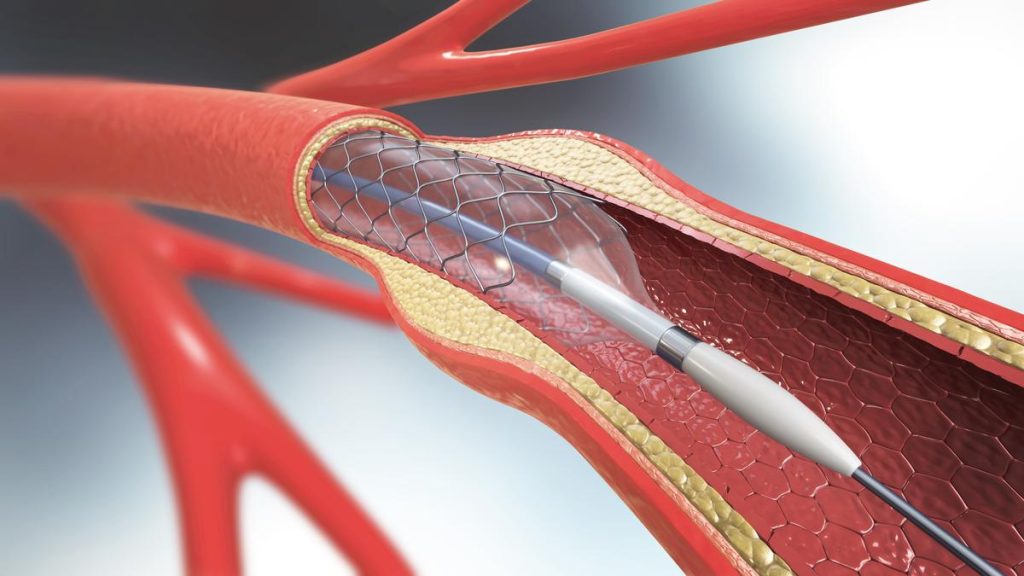BALLOON VALVULOPLASTY
A valvuloplasty is a procedure that is used to open a heart valve that has become narrow. Instead of using traditional surgery, a catheter with a small, hollow tube is used to inflate a balloon in order to reach the heart. This less invasive method typically results in a faster recovery time and less discomfort. Another term for this procedure is balloon valvuloplasty.

What is a Valvuloplasty?
A valvuloplasty, which is also known as a valvotomy, is a medical procedure that addresses structural heart disease by effectively widening a constricted heart valve. When heart valves become narrowed, a condition called valve stenosis occurs, leading to potential symptoms like chest pain or difficulty breathing. The purpose of a valvuloplasty is to alleviate these symptoms and improve blood flow.
During a valvuloplasty procedure, a catheter, which is a hollow and flexible tube, is utilized by an interventional cardiologist. This catheter is used to effectively place a balloon inside a heart valve that has narrowed. Once the balloon is properly positioned, the cardiologist proceeds to inflate it with the aim of enlarging the valve and enhancing the flow of blood.
Other names for valvuloplasty include:
- Valvotomy
- Balloon valvuloplasty
- Balloon valvotomy
Types of Balloon Valvuloplasty:
Balloon mitral valvuloplasty
Individuals who have been identified as having mitral valve stenosis also possess a heightened risk for aortic stenosis. This procedure is reasonably secure, although it is conducted blindly, and carries potential risks and complications.
Balloon aortic valvuloplasty
Balloon aortic valvuloplasty, also referred to as balloon aortic valvotomy, remains a secure choice for the patient’s optimal medical treatment.

Who needs to have a valvuloplasty?
If you have a narrowed heart valve (stenosis), valvuloplasty might be suggested as a potential solution. This procedure could be recommended by your healthcare provider to address various heart valve diseases.
- Mitral valve stenosis.
- Pulmonary valve stenosis.
- Tricuspid valve stenosis.
Valvuloplasty may be used less frequently by providers to treat aortic valve stenosis. It can be successful in children and young adults with congenital aortic stenosis. However, in adults with aortic valve stenosis, the narrowness of the aortic valve often returns after valvuloplasty. Your provider may use aortic valvuloplasty as a temporary measure before aortic valve surgery or transcatheter aortic valve replacement (TAVR). However, valvuloplasty should not be seen as a replacement for a heart valve replacement.
What happens before a balloon valvuloplasty?
Before the balloon valvuloplasty, the surgeon gives the patient detailed guidance and discusses potential risks such as bleeding, infection, and unfavorable response to anesthesia.
Before the surgery, patients have a consultation with the anesthesiologist to go over their medical records. They are advised to refrain from eating anything after midnight on the evening before the procedure.
The patient comes to the hospital on the day of the surgery, completes the necessary formalities, and then changes into a hospital gown. A nurse carefully examines the patient’s medical records to ensure no issues are present.
Following this, the anesthesiologist initiates an intravenous (IV) procedure, after which the patient is transported to the operating room. In the operating room, the surgeon confirms both the patient’s identity and the type of procedure to be undertaken prior to administering any medication. The surgery will commence once the patient is successfully rendered unconscious by the anesthesia.

What happens during a balloon valvuloplasty?
A valvuloplasty is a medical procedure performed by a specialized doctor called a cardiologist, who focuses on the heart. During this procedure, the cardiologist carries out certain tasks.
Introduces a tiny, empty tube known as a sheath into a blood vessel in either your groin, arm, or shoulder.
Passes a catheter containing a deflated balloon through the outer covering.
Administers a contrasting substance and employs X-ray imaging to navigate the catheter towards your cardiac valve.
The balloon is inflated in order to expand the narrowed heart valve.
The catheter is taken out and the spot where it was inserted is sealed either by using stitches or a unique surgical adhesive.
On occasions, your heart specialist may decide to retain the sheath for a duration of around six hours. This decision may be made based on concerns about potential bleeding or the necessity to allow sufficient time for the effects of blood-thinning medication to diminish.
Balloon Valvuloplasty Recovery
After undergoing a valvuloplasty, it is typical for patients to spend one night in the hospital. To prevent bleeding at the site where the catheter was inserted, you will be required to remain in a flat position for several hours. The medical staff will advise you to drink a sufficient amount of water in order to eliminate the contrast dye from your body. However, you can generally return to your regular eating habits soon after the procedure.
The symptoms of valve stenosis, such as chest pain, fatigue, and shortness of breath, usually improve immediately for most people. It is usual to have a minor bruise near where the catheter is inserted. Your medical team will tell you what signs to look out for that may indicate complications, like bleeding, swelling, or changes in temperature at the catheter insertion site. After having a balloon valvuloplasty, it is recommended to avoid strenuous activities for a few days. Depending on your overall health and the underlying diagnosis, you may be able to return to your normal activities within a few days.
Complications are infrequent, but possible and may comprise notable hemorrhaging, irregular heartbeat, or formation of blood clots. Make sure to immediately contact your physician if you observe any indications of complications, such as:
- Chest pain or pressure
- Decreased urination
- Fever or chills
- Nausea or vomiting
- Discomfort, inflammation or warmth experienced at the area where the catheter is inserted.
- Swelling in your legs or abdomen
- is excessive weight gain of more than three pounds within a 24-hour period.
Treatment in Türkiye:
The medical staff of surgical teams, doctors, and consultants at REHABTÜRK can provide the best treatment options and free consultations, striving to stay up-to-date on the latest medical technologies and methods.
